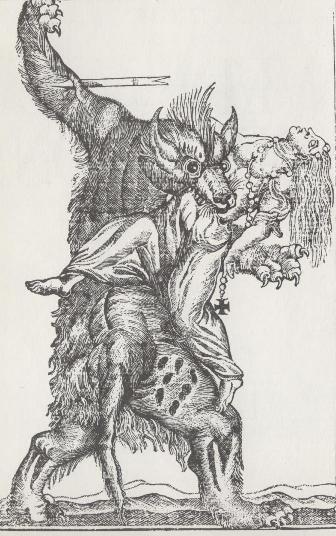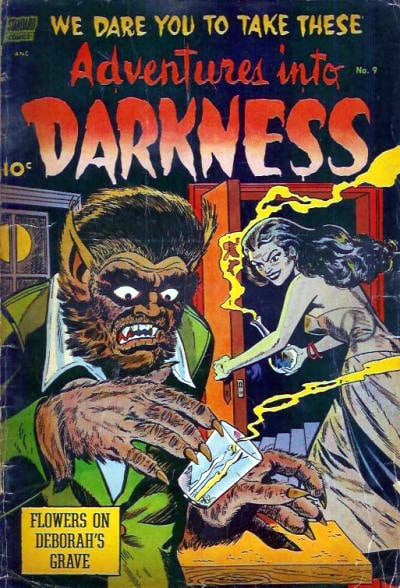- HubPages»
- Books, Literature, and Writing»
- Books & Novels»
- Fiction»
- Science Fiction & Fantasy Books
What is Lycanthopy?

Werewolf? There Wolf. There Castle
There are many kinds of monsters in this world.
In these days of zombie bashing and vampire worship we’ve ignored the fascinating monster-beast known as the lycanthrope or common werewolf. While they may not be as sexually provocative to women as vampires, there is a lot to say about the dichotomy of man and monster. The traditional story of the werewolf has always been that of a good but cursed individual who loses control of his actual self for three nights out of the month. The beast is a wild carnivorous killer that would kill its mother as easily as it would breathe.
But what do we really know about lycanthropy?
There are several different stories on how it happens. Some myths say that it’s hereditary. Others say that it happens after another lycanthrope attacks its victim and like most of the undead myths the victim himself becomes another monster.
One thing is for certain, there’s a lot we don’t know about these creatures.
Real Lycanthropes
Yes, you heard me.
There is such a condition. Although, I can say that it’s not as dramatic as you might envision. There is no predisposition to be a shirtless exhibitionist and it is only in very rare cases that extra hair will sprout from the person suffering under it.*
Clinical lycanthropy is defined as a rare psychiatric syndrome that involves a delusion that the affected person can transform into, has transformed into, or is a non-human animal. The patient thinks he’s an animal. He will exhibit signs of being such an animal. Sometimes, it is the delusional believe that the patient has turned into an animal in the past and such a psychosis may or may not be accompanied by mental hallucinations.
This case, though rare, is usually part of a psychotic episode and is usually caused by another condition such as schizophrenia, bipolar disorder, or clinical depression.
*There is such a phenomenon in some cases of schizophrenia where the alternate personality is so real to the person that one personality may have diabetes and the other will not. As some extreme physical changes can happen in one case, it may be theoretically possible that such a phenomenon could happen with a person suffering from extreme psychological lycanthropy.

Werewolves As We Know Them
In literature and on the screen, we’ve read and seen many types of werewolves. The basic type of werewolf is a person who transforms into a wolf. But, in the entertainment we’ve come to know and love, we know there are many other types than just the basic model.
The general rules for a werewolf is that when the moon is full a man will turn into a wolf. This rule has been played around with by many science fiction and fantasy authors to mean a few different things. We have seen that the changes only happen during a full moon. This is a great thing for person suffering from lycanthropy. He knows that if he follows the typical cycles of the full moon (give or take a day) he can take precautions and have himself chained up or imprisoned until the next morning. . It’s slightly inconvenient, but doable.
The other take on the moonrise is each phase of the moon will bring a different level of wolfishness to the werewolf. Ergo, the only times the werewolf will NOT change at all are the three nights of the new moon. While there may be some subtle changes on a waning or waxing crescent moon and some very noticeable changes on the half and gibbous moons, the only time that the werewolf would lose complete control would be during the three nights of the full moon.
Some wolf myths say (like Terry Pratchett’s Sgt. Angua) that a werewolf can change voluntarily at any time – day or night – until the full moon where the change is involuntary. While the moon is not full, the werewolf will retain full human intelligence.
There is always some amount or argument about what werewolves and vampires can do depending on the author. However, the one thing that all werewolf legends share is the vulnerability to silver. A silver bullet through the heart of a werewolf will kill it forever. The vulnerability has been expanded to silver blades as well. Stab a werewolf through the heart; you’ll kill it just as easy. Like all legends that turn to silver as a vulnerability, this is because of the spiritual pureness of the metal.
Types of Werewolves
This is broken down in levels of purity as to how much of a wolf does the man shift into.
Take for instance a man who is a psychological lycanthrope. He really only acts like a wolf, for the most part. There is no real transformation. That doesn’t mean they’re not dangerous. Any person who has delusions that they are a vicious animal is like dealing with a rabid psychotic. Still dangerous – just not supernaturally so.
There are the loup-garou which are the Lon Chaney Jr.-like wolf men. They vary in looks from short snouted to “wolf walking on hind legs”. These are the ones that grow some pointed ears and long teeth. They run on two feet and live to rip out someone’s throat. They are completely savage and incredibly dangerous.
Then there are the werewolves that are like gigantic wolves. They are like the American Werewolf in London wolf. They are almost bears. They are completely uncontrollable and insanely dangerous. You can’t outrun them and they will most likely tear apart any place you try to hide (and you can’t hide from something that can sniff you out).
Then there’s the garden variety guy who turns into a wolf. The wolf is a wolf. It’s still dangerous, but dangerous in the sense that a wolf is dangerous when you’re out in the middle of the wilderness. A large wolf can still rip out your throat and eat your flesh.
My favorite incarnation on this theme comes from Peter David and Terry Pratchett (separately). I attribute it more to the former than the latter. David came up with a wolf that is bitten by a werewolf. That creature turns into a man three days out of the month. He has to deal with the reduced perception of smell and taste as well as get used to walking on two legs. For more information and enjoyment read Peter David’s Howling Mad story.
Werewolves on Amazon
Final Words
I really think that the werewolves have been ignored for far too long.
There was some amount of resurgence during the Team Jacob versus Team Edward in the Twilight movie nonsense, as well as what we see in the True Blood series on HBO. Werewolf lovers will also remember the Wolf Man movie starring Benicio Del Toro as well as the Underworld franchise of movies (Werewolves versus Vampires).
As a matter of fact, the crossover of the werewolves versus vampires theme goes along many lines aside from Twilight. It just seems to be something that’s been going on since Abbot and Costello Meet Frankenstein, the Wolf Man, and Dracula. The Lon Chaney, Jr. versus Bela Lugosi is the first time I saw the primal wolf versus bat come into play.
Marvel Comics introduced the Werewolf by Night comic book title as young Jack Russell (yeah, I can’t believe they used it either) as a man with a family curse.
What we have to remember with this story is that it is a struggle of man versus his savage nature. Many of the movies and stories we see revolve around a good man who is out of control. If only he could control this monster then he would have the love (usually his true love) of a good woman. And, later on in the story, he will have transformed into this creature and have a moment when the man in him is fighting against the monster. At the last second, the man loses. That’s usually when the best friend of the wolf man’s alter ego shoots the wolf through the heart with a silver bullet.
All of the best stories are tragic. And all of the best stories turn out the same. Not every guy can be Teen Wolf.
Someone has to die to know the suffering of the hero is at an end.






